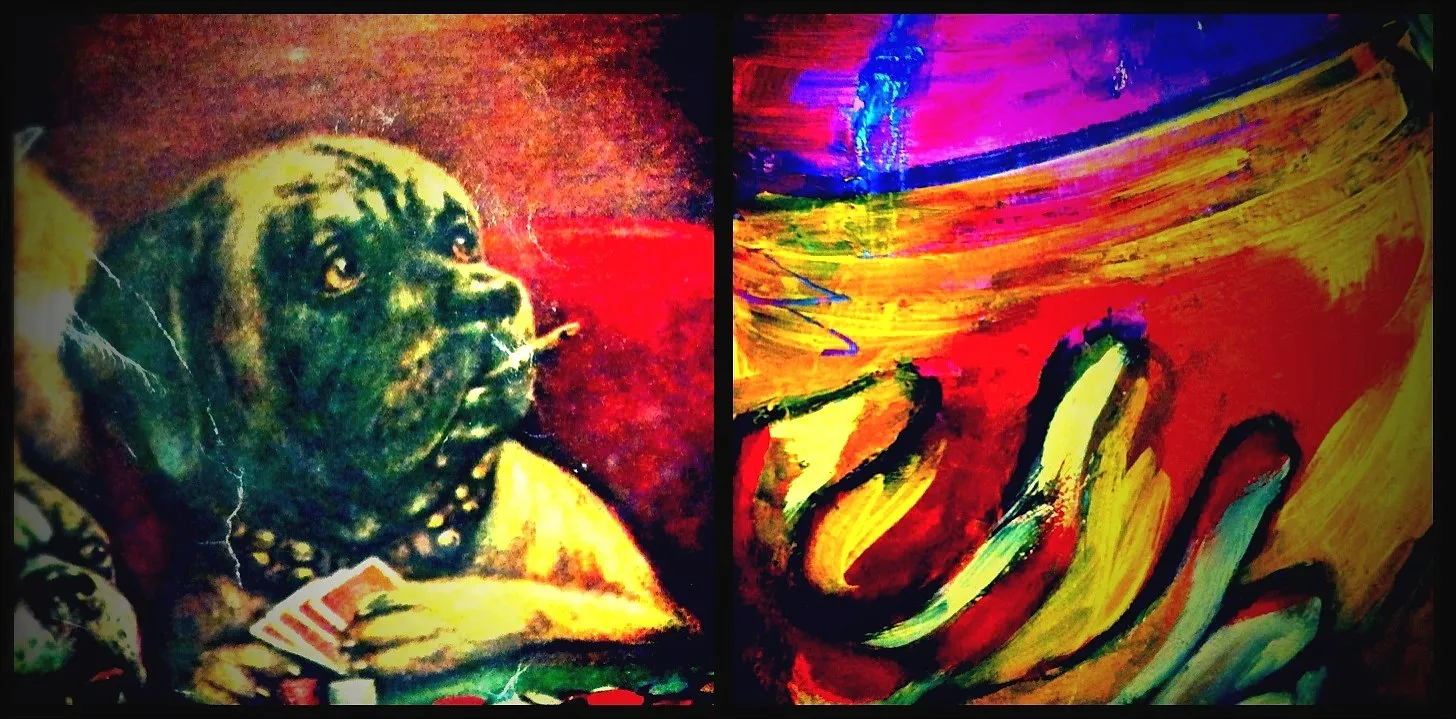Dog Distracted by Applause for The Flying Wallendas

This diptych pairs two thrift store finds: a fragment from the kitsch classic Dogs Playing Poker and an abstract painting suggesting chaotic movement. The dog’s upward gaze, diverted from his card game, creates the visual bridge between panels—his attention captured by something beyond the frame.
The right panel’s explosive brushwork and color represents the spectacle named in the title: the Flying Wallendas, legendary high-wire performers known for working without nets. Rather than depicting the act directly, the work captures its effect through abstraction—the visual chaos of risk and applause.
The piece plays with how attention shifts between the readable and the overwhelming, the controlled narrative of kitsch versus pure sensory spectacle. The dog becomes a stand-in for the viewer, caught between two modes of looking: the familiar and the incomprehensible.
Essay written: November 2025